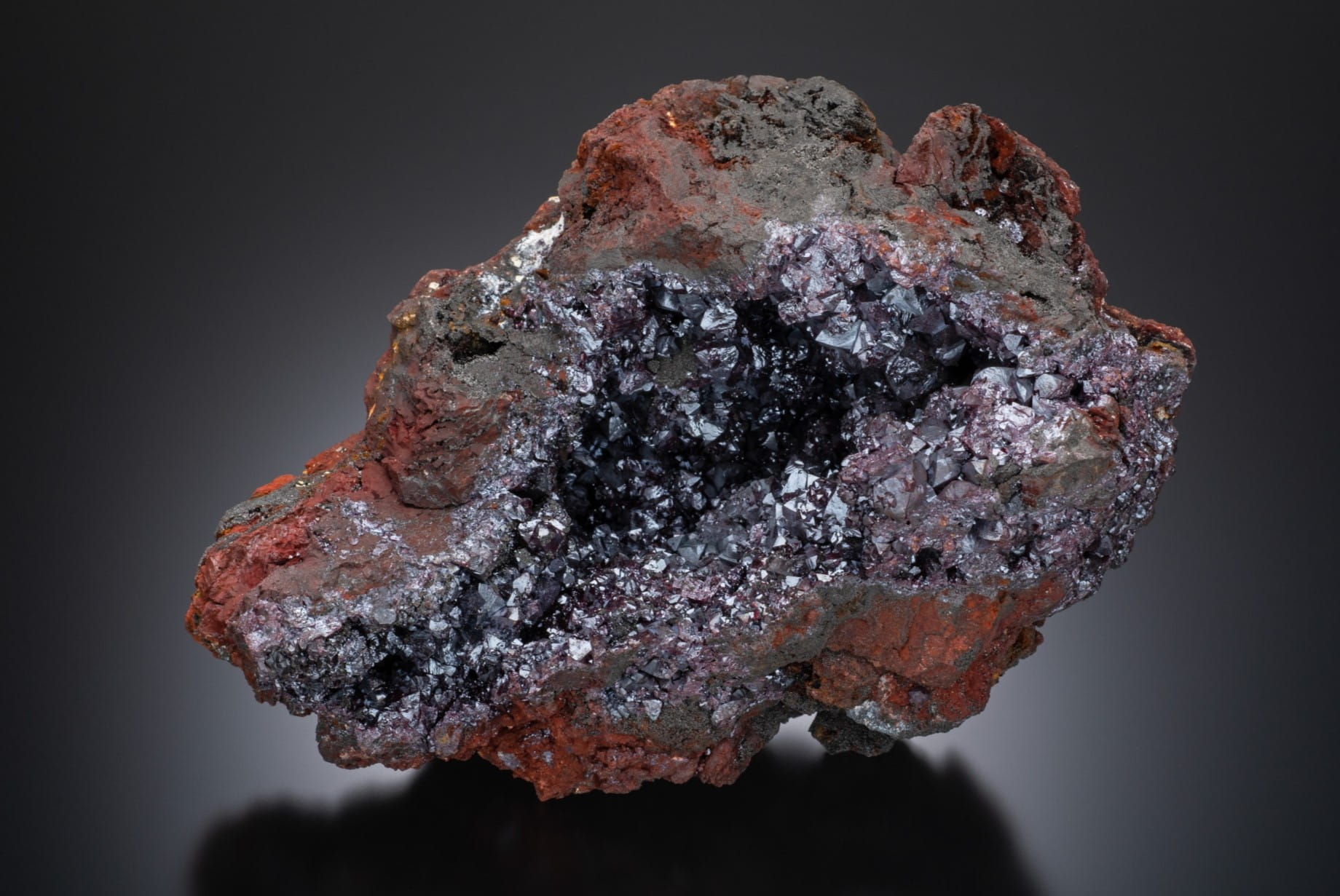
Delafossite is a fascinating mineral that often flies under the radar. Named after the French mineralogist Gabriel Delafosse, this mineral boasts a unique combination of copper and iron oxides. Found in various parts of the world, delafossite is known for its metallic luster and striking appearance. But what makes it truly special? Delafossite has intriguing electrical properties, making it a subject of interest for scientists and researchers. From its crystal structure to its potential applications in technology, there's a lot to uncover about this mineral. Ready to dive into 30 captivating facts about delafossite? Let's get started!
Key Takeaways:
- Delafossite is a rare and fascinating mineral with unique properties, used in electronics and materials science. It's found in various locations worldwide and is prized by mineral collectors for its metallic luster and crystal structure.
- Named after Gabriel Delafosse, Delafossite is a copper iron oxide mineral with variants containing silver and cobalt. Its trigonal crystal system and dense, opaque nature make it a valuable and sought-after specimen for collectors.
What is Delafossite?
Delafossite is a fascinating mineral with a unique structure and intriguing properties. Named after the French mineralogist Gabriel Delafosse, this mineral has captured the interest of scientists and collectors alike.
- Delafossite is a copper iron oxide mineral with the chemical formula CuFeO₂.
- It was first discovered in 1873 in the copper mines of Bisbee, Arizona.
- The mineral is named after Gabriel Delafosse, a French crystallographer and mineralogist.
- Delafossite typically forms in hydrothermal veins and oxidized zones of copper deposits.
- It exhibits a trigonal crystal system, which means its crystals are shaped like triangles.
Physical Properties of Delafossite
Delafossite's physical properties make it stand out among other minerals. These characteristics are essential for identifying and understanding the mineral.
- Delafossite crystals are usually black or dark brown in color.
- The mineral has a metallic to sub-metallic luster, giving it a shiny appearance.
- It has a hardness of 5.5 on the Mohs scale, making it relatively hard but not as hard as quartz.
- Delafossite has a specific gravity of 5.5 to 6.1, indicating it is quite dense.
- The mineral is opaque, meaning light does not pass through it.
Chemical Composition and Variants
Delafossite's chemical composition is quite interesting, and there are several variants of this mineral, each with unique properties.
- The primary elements in delafossite are copper (Cu), iron (Fe), and oxygen (O).
- There are also variants of delafossite that contain other metals, such as silver (Ag) and cobalt (Co).
- Silver delafossite, with the formula AgFeO₂, is known for its silver content.
- Cobalt delafossite, with the formula CoFeO₂, contains cobalt instead of copper.
- These variants often have different colors and properties compared to the original delafossite.
Uses and Applications of Delafossite
Delafossite has several practical applications, particularly in the fields of electronics and materials science.
- Delafossite is used in the production of transparent conductive oxides (TCOs).
- TCOs are essential components in touchscreens, solar cells, and LED displays.
- The mineral's unique electrical properties make it valuable for these applications.
- Researchers are exploring delafossite's potential in thermoelectric materials, which convert heat into electricity.
- Delafossite's ability to conduct electricity while remaining transparent is a rare and valuable trait.
Delafossite in Nature
Delafossite can be found in various locations around the world, often in association with other minerals.
- Significant deposits of delafossite have been found in Bisbee, Arizona, USA.
- The mineral is also found in the copper mines of Chile, particularly in the Atacama Desert.
- Delafossite has been discovered in Japan, specifically in the Nakatatsu Mine.
- Other notable locations include the copper mines of Namibia and the Democratic Republic of Congo.
- Delafossite often occurs alongside minerals like cuprite, malachite, and azurite.
Collecting and Identifying Delafossite
For mineral collectors, delafossite is a prized specimen due to its unique properties and rarity.
- Delafossite specimens are often collected for their metallic luster and crystal structure.
- Identifying delafossite requires examining its physical properties, such as color, luster, and hardness.
- The mineral's trigonal crystal system can help distinguish it from other similar minerals.
- Collectors often seek delafossite specimens from well-known locations like Bisbee and the Atacama Desert.
- High-quality delafossite specimens can be valuable and sought after by collectors worldwide.
Final Glimpse at Delafossite
Delafossite, a fascinating mineral, holds a unique place in the world of geology. With its distinctive crystal structure and varied color palette, it captivates both scientists and collectors. Found in locations like Chile, Japan, and Russia, this mineral's rarity adds to its allure. Its copper content makes it valuable for industrial applications, while its aesthetic appeal draws interest from gem enthusiasts.
Understanding delafossite's properties and origins provides insight into Earth's geological processes. Whether you're a seasoned geologist or a curious learner, delafossite offers a glimpse into the planet's rich mineral diversity. Keep exploring and uncovering the wonders of minerals like delafossite, as each discovery adds to our knowledge of the natural world. Happy rock hunting!
Frequently Asked Questions
Was this page helpful?
Our commitment to delivering trustworthy and engaging content is at the heart of what we do. Each fact on our site is contributed by real users like you, bringing a wealth of diverse insights and information. To ensure the highest standards of accuracy and reliability, our dedicated editors meticulously review each submission. This process guarantees that the facts we share are not only fascinating but also credible. Trust in our commitment to quality and authenticity as you explore and learn with us.
